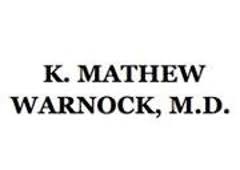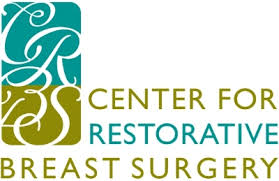Medical & Healthcare Digital Marketing
  |
  |
  |
|
  |
  |
18 Years of Medical Marketing
Editor’s note:
18 years ago when Search Influence first started working with medical practices, I figured the market had to be saturated. Especially in high-ticket, cosmetic medicine I was sure competition would be tough. But amazingly enough, our digital marketing strategies for those early practices were winners.
Even today, many healthcare providers are following the Kevin Costner, Field of Dreams model. But guess what: they won’t come.
A medical practice has to engage patients just like any other business engages their target market. Satisfied patients are the best advertising. Most patients don’t know where they’re going to end up when they start their search.
If you want to be ahead the other physicians and providers, there’s still a world of opportunity.
What Is Healthcare Marketing
Healthcare providers have a tough road when trying to market their healthcare organizations and stand out from the sea of competitors.
In short, medical marketing is using branding, media, and content to connect healthcare professionals with the patients who need them. Beyond that, one must consider the available patient volumes, regulations, including HIPAA and others.
Though not marketing, per se, it is also critical to maintain positive patient experiences, given their impact on patient reviews and the perceived reputation of an institution or physician.
What Matters Most in Healthcare Marketing?
These strategies have enabled the practices we help to expand their revenue by adding new doctors, procedures, and services to capitalize on the demand.


IT ALL STARTS WITH YOUR BRAND
By translating patient satisfaction via online content on your website and social media, potential patients can experience why they should choose you. Many well-established practices come to us to level up their online brand to the stature of their real-world reputation.


CONTENT MARKETING
Give your patients a taste of your expertise and bedside manner with online content—your greatest digital asset. Our expert content team will create engaging copy that captures the voice of your practice and keeps your patients informed throughout their decision making process.


SEARCH ENGINE OPTIMIZATION & PAID SEARCH
Get found when patients are searching for a solution in your area. Using leading paid search and organic techniques, we’ll increase your visibility, making it easy for patients to connect with you (ideally before they contact your competition)!


REVIEWS & REPUTATION MANAGEMENT
Assure that referred patients find the best side of your online brand when they search for more information. It’s very easy for negative reviews to make their way online without your knowledge. We’ll help proactively generate positive testimonials, monitor ratings sites for bad reviews, and, work with you to avoid them altogether.


SOCIAL MEDIA STRATEGY & COACHING
Showcase your practice’s personality, story, and best attributes to a wider audience of both new and existing patients on social media. Engaging in a direct and genuine way will help them think of you first when in their next moment of need. Our team has the resources and experience to develop and execute an effective strategy including content planning, creation, publication, and promotion.


TARGETED PAID ADVERTISING
Meet your potential patients where they spend their time online most with targeted digital advertising on Facebook, Instagram, and large set of websites available via Google Display. Engage segments of your audience with targeted messaging based on age, gender, and where they are in their decision making process.


WEBSITE DEVELOPMENT
Enhance the patient experience on your website either by improving your existing assets or starting fresh. Our stealthy web developers will make your website navigation process painless for your patients. We optimize your site across a variety of channels making a sleek and streamlined interface for desktop, mobile, and other devices.


EMAIL MARKETING
Though some younger marketers may see email as passé, it is still one of the most effective forms of online marketing. Email marketing ROI is around 40:1. Unlike Social Media, and Google’s business tools, your email list is all yours. Email is permission based, meaning those on your list have asked to hear from you and are ready buyers.


ANALYTICS AND TRACKING
Digital marketing is finally putting to rest the Wanamaker quote “Half the money I spend on advertising is wasted; the trouble is I don’t know which half”. A thoughtful and complete tracking plan, integrating your site and third-party analytics, will assure your marketing and advertising is focused on those efforts which deliver results.
Why market your practice with Search Influence?
At Search Influence, we’ve built an undeniable reputation for ourselves among our medical industry clients. Based on our unparalleled ability to produce results, we’ve developed tools that are innovative and allow our clients to rise above their competition. We’re skilled at what we do. Let us provide you with precise solutions that will produce results and ultimately more revenue for your facility.
What Does Marketing Mean in Healthcare?
From plastic surgery and dermatology to internal medicine and dentistry, the medical industry is a competitive marketplace.
Targeting the right kind of patients while also generating awareness of your procedures, facilities, and services is a major juggling act. In a day and age where 59% of adult internet users Google a procedure or potential illness before seeking medical advice, it is crucial for you to provide accurate and easy-to-find information online.
A strong digital marketing strategy should optimize your patients’ experiences and also take your practice to the next level through attraction and retention. But running a successful healthcare organization and managing digital marketing campaigns can be beyond challenging. Like healthcare, marketing is results-driven, and your reputation matters. Building a digital presence for your medical facility can seem like a big challenge, it doesn’t have to be.
What Is A Good Hospital Marketing Mix?
Platforms and channels available for medical practices to reach potential patients are nearly infinite. Which are most appropriate for your hospital will depend on a number of factors.
- Do new patients have other choices in your local marketplace?
- Can you profit from, or do you suffer from competition in telehealth?
- Do you have the staff to handle growth in patient volumes?
- Will your providers interact with patients in patient portals?
- Do you serve specific patient demographics?
All of these considerations, and more, will drive your marketing mix.
Is it 4 Ps, 5 Ps, 7 Ps? Well, that depends on the context. In thinking about a good hospital marketing mix the following may be useful.
4 Ps of Marketing And Your Medical Marketing Mix
- Product
- A good or service that a medical facility or practice offers to their patients.
- Price
- What we charge patients, and increasingly often, 3rd party payers for the services and procedures we offer.
- Place
- Where are the services provided? In hospital, clinic, urgent care, or by telemedicine?
- Promotion
- Advertising, Public Relations, Content, Coupons, Social Media, SEO and more are now part of our promotion toolbox.
For a more robust reference from Investopedia: The 4 Ps of Marketing
5 Ps of Medical Marketing
In his article “The New 5 Ps of Healthcare Marketing“, Chris Mycek argues that marketing in healthcare is profoundly more complex today. In the past, he contends, one only had to worry about physicians and patients, but in the new healthcare marketing reality, the number of stakeholders had grown significantly.
The list Chris suggests we target now is:
- Patients
- Both more empowered and more distracted, marketers have to be more targeted in both messaging and delivery.
- Physicians
- Many doctors are now employees and no longer business owners. From Chris’ article: 82 percent of physicians agreed with the statement, “Physicians have little influence on the direction of healthcare.”
- Professional Healthcare Administrators
- Health systems are no longer run by clinicians; they’re run by MBAs and MHAs and the dreaded JD/MHA.
- Payers
- While not particularly ripe for marketing messaging, in today’s healthcare industry, payers are the ultimate decision-makers.
- Policy Makers
- With Obamacare and the expansion of medicare, Washington D.C. will continue to play a dominant role in healthcare.
How to Put Healthcare Marketing Strategy First
Healthcare marketing campaigns, like much of marketing, are often driven by either shiny-object syndrome, or the channels that senior leaders find useful in their own healthcare industry engagement.
Whether it’s Twitter, Blog Posts, or social media pages, the tool is only as useful as its applicability to the job and the skill of its user.
As the adage says, “To a hammer, everything looks like a nail”.
When thinking about healthcare marketing strategy it’s important to remember that marketing trends come and go, but prospective patients will always be a part of our business. Modern marketing tools and tactics help us assure we’re putting the right message in front of the right audience.
Think about Patient Personas
As Ann Wanserski says in her article “Four Steps to Improve Your Content Marketing Strategy“:
“A buyer persona is a fictional “character” that represents a focused and clearly defined target audience based on actual customer behaviors and demographic research. By gathering insights from recent customers about their motivations, concerns, and decision-making processes, you can better understand how to appeal to a similar audience and nurture the right leads. You will also want to survey stakeholders within your company who interact firsthand with your customers in order to reveal any inconsistencies and better examine how prospects are converted.”
In other words, a patient persona is an avatar of your most likely patient. Most often, when building personas we give them a name, so we can identify them and identify with them. For instance:
- Helen Homemaker: a 30-something soccer mom with 2 kids and a dog…
- Steve the Septuagenarian: an active senior who lives by himself in a senior living facility and…
By giving our personas names and definable attributes we can start to test our theories of how our messaging may resonate with them. We can also validate through data if they’re likely to be present in the channels where we can deploy that messaging.
How Do Doctors Market Themselves?
There are as many approaches to marketing as there are medical professionals.
That said, it’s critical that licensed professionals – and especially medical professionals – keep on the right side of the law. For a deeper dive on language to keep your ads legal, have a look at this article by Jordan Polhemus: Healthcare Marketing Laws: Language to Keep Your Ads Legal.
At the time of this update, the healthcare industry as a whole is in recovery from the year of COVID. While tragic on a human and global level, the pandemic and associated lockdown have been good for some specialties.
Hospital based physicians and those with a mainly insurance compensated practice won’t have as much need to market as those in more elective and cosmetic specialties.
Anecdotally, in June of 2021, Plastic and Cosmetic Surgery is seeing an upsurge. Dr. William Franckle, a Plastic Surgeon in Southern New Jersey, across the river from Philadelphia, PA, believes this uptick is due to both more savings and the ability to recover at home without disruption to work. If this is your situation, marketing becomes much more about loyalty and reputation than patient acquisition.
In Search Influence’s fifteen years in plastic surgeon seo, reputation has always been critical. The prominence of rating and review sites has made a focus on a physician’s online reputation that much more important.
Thankfully, doctors and medical marketing professionals don’t have to guess where their marketing efforts are best dedicated.
Using tools like Google Trends, and data from reputable sources, marketers can greatly narrow their focus before spending the first dollar.
For a better view of both the trends and how to look at them in Google, please have a look at Paula French’s article: 2020 Medical Search Trends: Medical Searches Met and Exceeded Pre-COVID Levels Across Specialities.
A quick example of the kind of learnings available, from that article:
Summary of findings for cosmetic procedure search trends:
- There was an initial, short-lived dip in search interest for liposuction, rhinoplasty, breast augmentation, and face lifts (rhytidectomy). This dip spanned across the end of March and into April.
- After the dip, there was a surge in interest, with the number of searches actually exceeding pre-COVID levels at the end of January 2021 for liposuction, rhinoplasty, breast augmentation, and face lifts.
- By late January 2021, liposuction saw peak interest (100), significantly exceeding pre-COVID interest levels, when the peak was 79.
- Rhinoplasty interest also peaked in July and remains above the pre-COVID average.
- Breast augmentation search interest met and then exceeded pre-COVID interest in the summer of 2020, and has peaked above the pre-COVID high in January 2021.
- Face lift interest initially peaked in July at 36, decreased a bit through the fall, and peaked again in January 2021, with an interest level of 33, which is higher than the pre-COVID peak of 31.
Regardless of the specialty, it’s important to be present where the patients are looking. Internet usage, particularly in social media, is very dynamic.
According to the Pew Research Center:
A majority of Americans say they use YouTube and Facebook, while use of Instagram, Snapchat and TikTok is especially common among adults under 30.
For the full report please see: Pew Research: Social Media Use in 2021.
It’s interesting to note that YouTube has the highest penetration among U.S. adults, ahead of Facebook and any other Social Media channel.
In short, reputation is the most critical focus for medical practices. Once there is a plan to manage that, one can triage based on patient populations, with an eye toward search trends and internet usage, and percentage of practice that is cash versus insurance compensated.
Patient-Driven Healthcare Marketing Wins
- Even more than before the pandemic, healthcare is now consumer based
- From Deloitte: “The COVID-19 pandemic has significantly changed consumer behaviors and attitudes along with their anxiety and comfort levels about health care globally”.
- In the study, Deloitte measured consumer agency in healthcare, e.g.:
- Willingness to disagree with their doctor
- Tracking their health conditions and using that data to make decisions
- Accessing and using their medical record data and wanting ownership of it
- Engaging in healthy behavior/prevention
- And much more
- When choosing a provider, 69.9% consider online reputation important
- Today more people trust online reviews than word of mouth
- Online reviews are social proof
- Reviews often include valuable signals for SEO, like keywords
- 5% of all Google searches are health-related
- Patients are becoming “Healthcare Consumers” with the same expectations of other retail experiences
According to Experian, a credit reporting and data company:
“When you know what information will be most helpful to your patients, you can create relevant content and segment your marketing campaign to deliver the right information, at the right time, in the right format.”
In other words, an understanding of the Patient Journey, globally, and your specific patient persona will help assure you as a healthcare marketer are presenting patients the right message at the right time, and with the right calls to action.
Understanding the Patient Journey
In today’s Healthcare Marketing landscape, there isn’t just one patient journey.
The patient’s journey will look radically different depending on what they’re seeking care for and for whom.
In each case, though they will move from Awareness through Consideration to, ultimately, Decision.
A patient for a breast cancer practice, for instance, may receive their diagnosis by multiple paths:
- They may discover a “lump”
- They may be receiving a routine mammogram
- They may have learned that their family is prone to a given gene, associated with breast cancer and have a desire to be tested
This is their “awareness”. The sad truth is that most of us know someone afflicted with breast cancer and it’s unlikely they’re only becoming aware of the problem.
Their next actions, in the “consideration” stage may vary widely.
If they have a personal physician they may seek their counsel. If they have friends and family who’ve been affected by breast cancer they may reach out to them. And, very likely, they’ll also take advantage of Dr. Google who will lead them to any number of resources, some reputable, some not.
Once they’ve learned all they can, they’ll then likely begin the search for doctors and healthcare facilities who can help.
After a number of conversations and consultations, they’ll choose a provider to help remove the cancer and most likely reconstruct the affected areas.
This choosing of a provider is the “decision”, and may take days, weeks or months. In elective medicine, i.e. where there’s not an emergent need the decision making process may take years.
For truly emergent cases, the journey is much more compressed. If, for example, a child is injured on the soccer field, and medical care is needed, that child’s parents will need to move much more quickly.
Often, the “awareness” stage for this kind of emergent need has been ongoing. Your hospital or healthcare organization’s brand marketing has been making your local community aware of your existence for years. Take for example the regional Children’s hospital in many communities.
Consideration and decision are compressed due to both the emergent need and your prior brand marketing. Even if you aren’t a parent you can understand how a screaming child can spur you to action.
If you’re a do-it-yourself marketer, HubSpot has a comprehensive Customer Journey Map template you can follow.
Among their advice which may be most instructive is to “Think about your design last.” Way before you get to design, you have to have internal and external stakeholders to assure you’re considering the personas appropriate to your offering.
And as with all things healthcare, remember why they call it practice. There’s always room for improvement.
If you consider all the data, define reasonable personas and involve the right stakeholders — preferably diverse enough to limit unconscious bias – you’ll be well on your way to understanding your patient journey.
Is Traditional Marketing Dead in Healthcare?
Short answer: heck no!
Despite the advances in digital marketing and advertising, traditional marketing still has a place in healthcare. Both locally and regionally, healthcare institutions can assure they’re part of the conversation through good branding and brand advertising.
Of course, digital marketing technologies are making traditional media much more effective and trackable.
So what forms of traditional marketing are still worth considering?
Television and Radio
Unless you live in a very small town, there are likely multiple health centers in your area. And in many areas, there are multiple options equally distant.
In these cases, it’s important to remind prospective patients of your presence and Television and Radio are a great way to do that.
And, those television and radio commercials can be repurposed for OTT (over-the-top) advertising on digital television and digital music delivery such as Spotify and Pandora.
Outdoor
Static, unchanging billboards are going the way of the dinosaur. Today’s digital billboards allow for a ton of options that weren’t available in static billboards.
In addition to more revenue for the operators — since they can sell the same space more times — digital billboards allow:
- Ads rotation in a slideshow fashion
- They’re located where your customers are
- You can change your message without additional production cost for the media and installation
- You can stream live data – for instance, E.R. wait times
- An ad can go “live” within minutes
Events and Sponsorships
Event and sponsorship healthcare marketing allow institutions and practices to get in front of their target audience and demonstrate affinity at the same time.
Some examples include:
- An orthodontist with a banner on the little league fence
- A regional healthcare center sponsoring a festival
- A local hospital sponsoring a sports team
Direct Mail
As social media channels are moving away from demographic segmentation, direct mail marketing allows much of the same precision, without worrying about the Federal Trade Commission.
Whether you’re engaging past customers, or pairing with your digital offerings, a postcard or letter is harder to ignore than a promotional email.
Don’t think of Direct Mail as an exclusive channel, though. Many list vendors have both physical addresses and email addresses. By using both physical and digital and committing to multiple mailings you can have multiple impressions which we know, in this distracted world, is more important than ever.
And finally, don’t think of direct mail as untrackable. You can include unique QR codes and personalized URLs (PURLs) in your physical mailing to see when an offer is redeemed or when your prospect comes looking for more information.
Printed Material
Whether takeaways for patients to better understand their procedure or instructions, or leave-behinds for referring physicians, print is far from dead.
A link in an email is easy to lose or delete, but a well crafted flyer often finds its way into a briefcase for later reference.
Remember, in every instance of traditional marketing for your healthcare institution, you should be demanding the same kind of metrics-based accountability you would from your digital marketing. It’s hard to do, and perhaps not as precise, but any medium will have metrics you can use to validate its cost.
Do Healthcare Organizations Need Digital Marketing?
Again, short answer: heck yes!
Marketing is a big complex topic. Digital marketing is too big a piece of the current marketing pie to ignore.
In the old days, your Healthcare SEO strategy could be much more simple. Research Keywords, develop topics to then create content on your medical website and watch your rank in the Google search results jump.
Not long after, Local SEO, and Google Maps became important parts of your strategy. These days, however, you won’t get much of a boost from updating your Google My Business listing.
The challenge of search is that the Search Engines are always changing. For example, Google’s latest release “Core Web Vitals” makes your website design a much bigger factor in how well you’ll rank in the future.
Don’t lose hope and think you have no choice but to use Google Ads to drive traffic to a targeted landing page.
Focus on patients first, then strategy, and get help if you need it.
If you’re interested, please have a look at our Plastic Surgeon SEO site. We’re going to be building it out with resources relevant to Plastic Surgery digital marketing.

